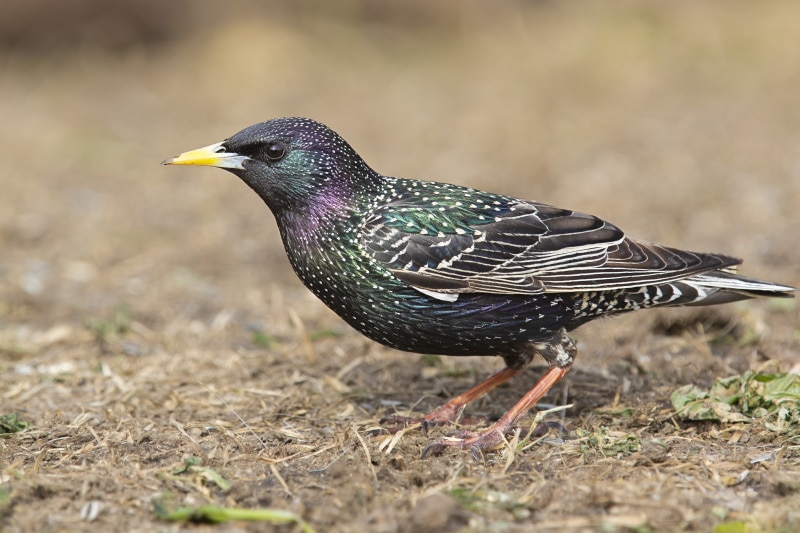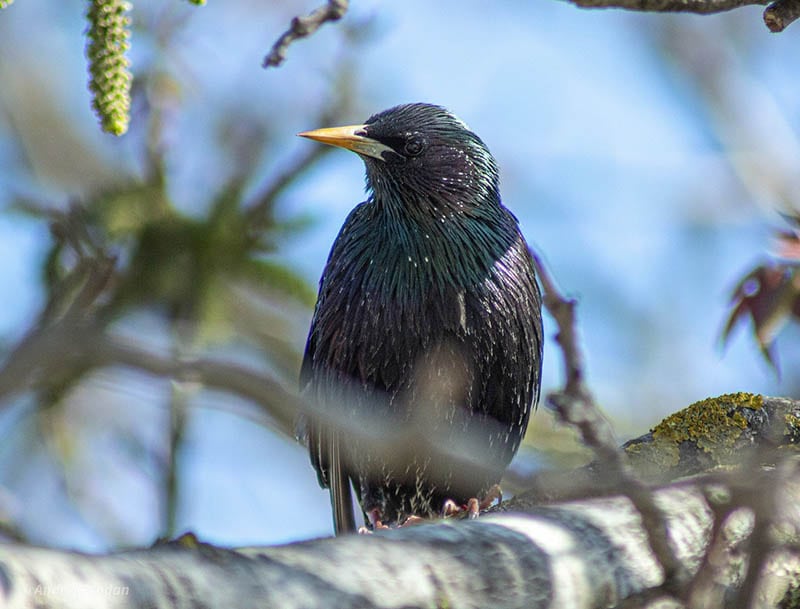Do Starlings Eat Baby Birds? Habits, Facts & FAQ
Last Updated on

Starlings were only introduced to the U.S. in 1890 when 100 of the species were brought over from the UK. There are now more than 200 million Starlings found across the country. Because they compete with many native species, they are considered a pest in some areas. Another reason for the species’ bad reputation is that Starlings will eat the eggs of other birds. The Starling isn’t unique in its penchant for egg eating, however, with other species, including some woodpeckers, jays, and ravens, also raiding bird nests to get at the eggs inside.
European Starling Pests
European Starlings are now widespread across the mainland United States. They have a varied diet, consisting of insects but also seeds and some crops, and they will make their cavity nests in holes in walls but also inside vents and holes in walls. They are also considered a pest because they gather in flocks consisting of thousands, up to hundreds of thousands, and will settle near or in urban areas where their noise and their toileting habits can be considered a nuisance.
Some people consider Starlings a nuisance because they will compete for nesting cavities. They usually compete with woodpeckers and bluebirds, both of which are considered favorites by backyard ornithologists.
Starlings will pull out nesting materials and they may even kill young birds that they find in a nest that they want for themselves. Although the Starling will rarely take or steal baby birds, they will sometimes eat them, and they may also eat any eggs that they find in existing nests. If parent birds happen to be in the nest at the time, they may also attack the parents.

Natural Aggressors
Starlings are naturally aggressive birds, and because they are not native to the country, it’s not against the law to remove their nests. However, you have to be sure that you are dealing with a Starling nest because the removal of eggs and nests belonging to other birds may be against Federal law.
Deterrents
It is very difficult to deter Starlings from natural nests. While baffles can be put in trees to prevent climbing predators, deterrents like scares will not only scare the Starlings away but will also do a similar job of scaring away other species. If you have a birdhouse or nesting box, you can ensure that it is appropriate for the type of bird that you are trying to attract and not for Starlings, but even this can prove difficult because the species is adept at taking over the nests of many different types of birds.
Final Thoughts
Starlings are an invasive species that have taken over since their introduction some 125 years ago. While many people find their murmurations to be naturally breathtaking, they are considered a pest because they are an aggressive species that will compete with and even kill native bird species. They also feed on seeds and crops, and if they nest in an air conditioning or dryer vent, they can cause damage to your property and belongings, too. The species does kill young birds and eat the eggs of other birds, but it has proven very difficult to prevent them from doing so.
You Might Also Be Interested In:
Featured Image Credit: Pxhere
Table of Contents
About the Author Robert Sparks
Robert’s obsession with all things optical started early in life, when his optician father would bring home prototypes for Robert to play with. Nowadays, Robert is dedicated to helping others find the right optics for their needs. His hobbies include astronomy, astrophysics, and model building. Originally from Newark, NJ, he resides in Santa Fe, New Mexico, where the nighttime skies are filled with glittering stars.
Related Articles:
10 Types of Hummingbirds in Arkansas (With Pictures)
8 Types of Hummingbirds in Nebraska (With Pictures)
5 Types of Hummingbirds in Idaho (With Pictures)
3 Types of Hummingbirds in Mississippi (With Pictures)
8 Types of Hummingbirds in Kansas (With Pictures)
5 Types of Hummingbirds in West Virginia (With Pictures)
5 Types of Hummingbirds in Ohio (With Pictures)
Where Do Nuthatches Nest? Nuthatch Nesting Habits Explained
